What’s a Weighted Decision Matrix?

It’s a great starting point for making decisions and prioritizing projects! When there are too many options that all seem essential, this tool can help you focus on what’s objectively the best solution.
Invented by Stuart Pugh, the weighted decision matrix (or prioritization matrix) is a simple, effective tool that helps you prioritize your options. It not only helps you structure your own work—it also helps align and communicate transparently with stakeholders, board members, and colleagues.
Stakeholders often ask why a particular choice was made; this is a straightforward way to communicate why one option was chosen over another.
While putting together a weighted decision matrix, you’ll naturally consider various scenarios that might occur as a result of each option. This can prepare you for questions that may arise when presenting the options, and also foresee risks.
When to use a weighted decision matrix
- To prioritize tasks, projects, and campaigns that are running simultaneously
- When you have multiple options and need to spend your time and resources most effectively
- When you have to choose one option from a basket of apples, oranges and kumquats
A step-by-step guide: how to use a weighted decision matrix
Our sample organization is expanding and needs to prioritize its methods to do so. By using the weighted decision matrix, we can get a sense of which of the following options would be best to prioritize:
1. List the options to evaluate: 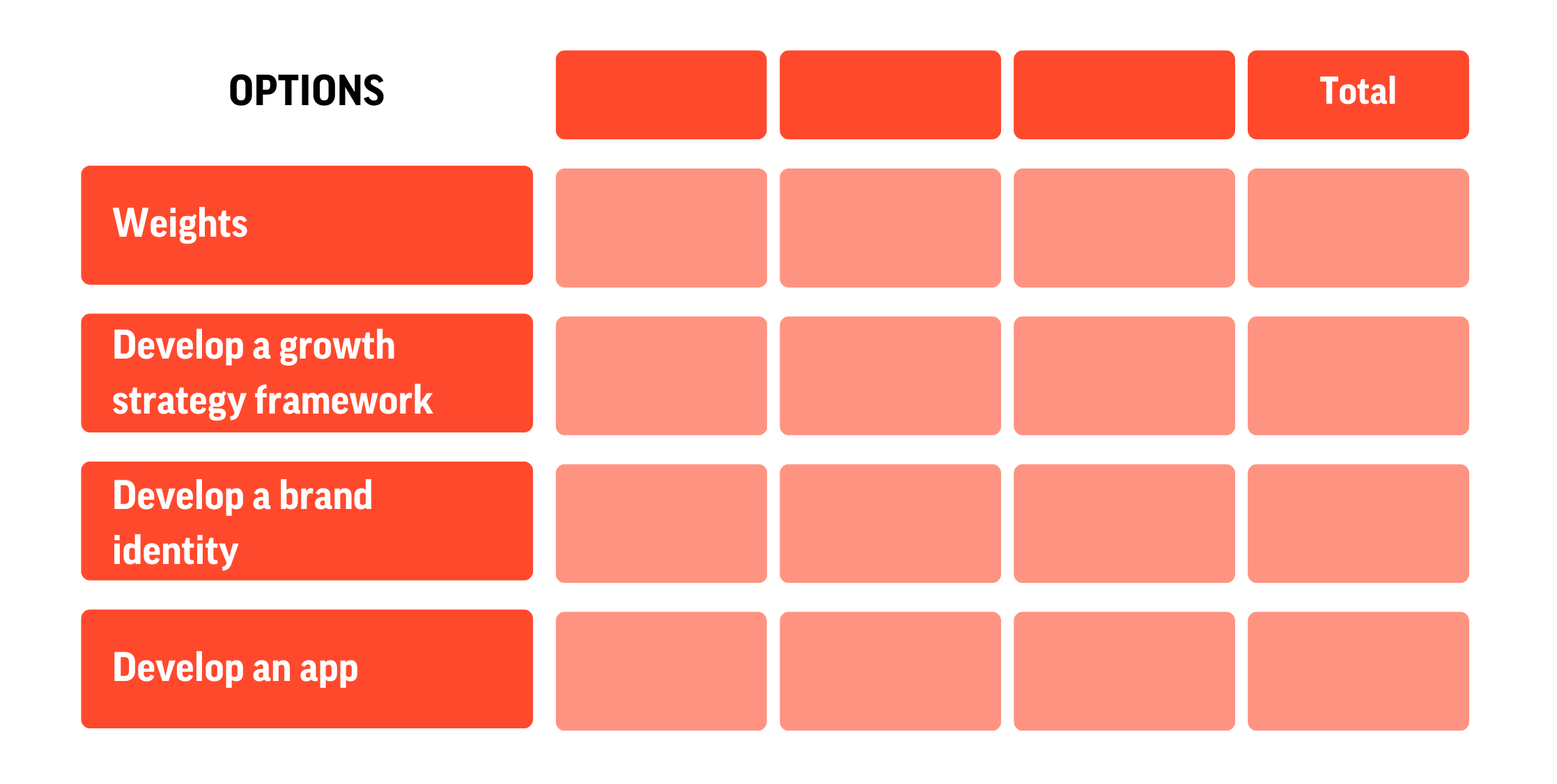 2. Choose factors to consider for all the options:
2. Choose factors to consider for all the options:
Find the balance between what should be included and what shouldn’t. The more in-depth you are, the more complex the matrix. However, sometimes in-depth is just what you need. To find the sweet spot, choose the most relevant and crucial factors and leave out the rest.
Here are some factors to consider in a decision matrix:
- Low cost
- Low risk
- Low effort
- High impact
- Location
- Business value
- Target audience value
- Customer satisfaction
- Employee satisfaction
In this example, we’ll use three factors: business value, low effort and high impact. 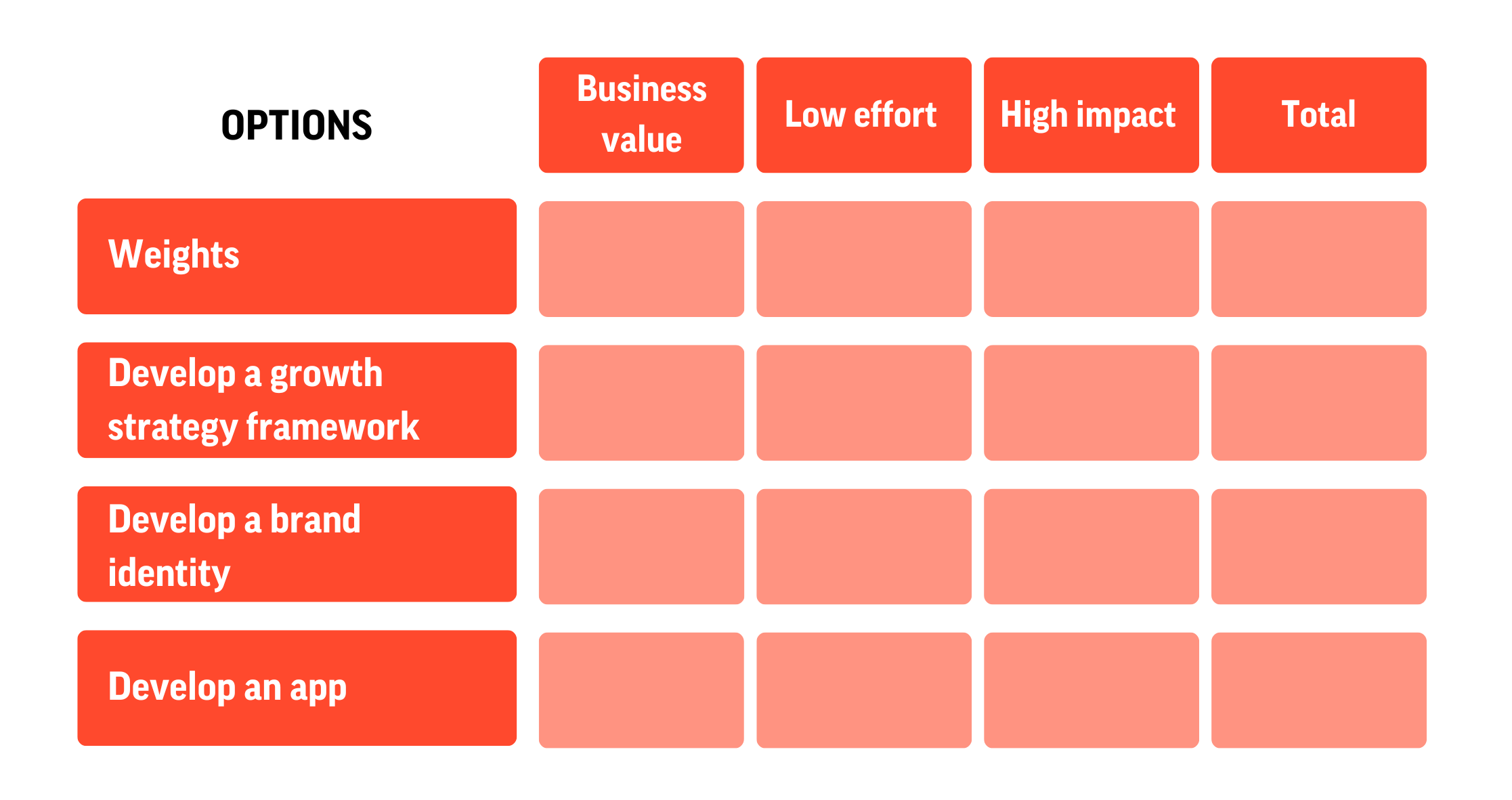
3. Score the factors by importance:
In the weighted decision matrix, you score each factor depending on its importance. First decide if you want to score from 1–5 (as in this example), 1–10, or higher. Which scale to use depends on the level of detail you want and how complex the options and factors are.
Business value is something that is good for your business overall—good for customers, employees, and company finances. Therefore, business value gets a 5 because it affects the brand as a whole.
Our sample organization values efficiency (ideally with the least effort), but is planning to further customize its strategy framework. Therefore, low effort gets a score of 3: good to keep in mind, but not the most crucial element.
The best business options have a high impact on customers, employees, the brand, or all three. High impact gets a score of 4. 
4. Score the options by how they satisfy each factor:
Here’s how our sample works out:
The Growth Strategy Framework option has a high business value because that solid foundation is needed to expand the business smoothly and sustainably.
If an organization is experienced in helping other companies expand, then creating their own growth strategy framework would be low effort. However, if their internal resources were already at maximum capacity, this score would be lower. A sound Growth Strategy Framework is always high impact, though mostly internally; it doesn’t directly affect customers. Therefore, let’s give it a 4.
Brand identity is an organization’s visual identity, its voice, and its story. It therefore has an intrinsically high business value.
Our sample firm has people working in communication and marketing with all the skills needed to develop a brand identity. This (as long as there is sufficient bandwidth for resources) means low effort score of 3.
The company will outsource app development—but without a strong Brand Identity and Growth Strategy Framework, developing an app is probably too much too soon. Therefore, Develop an App scores 3 across all factors.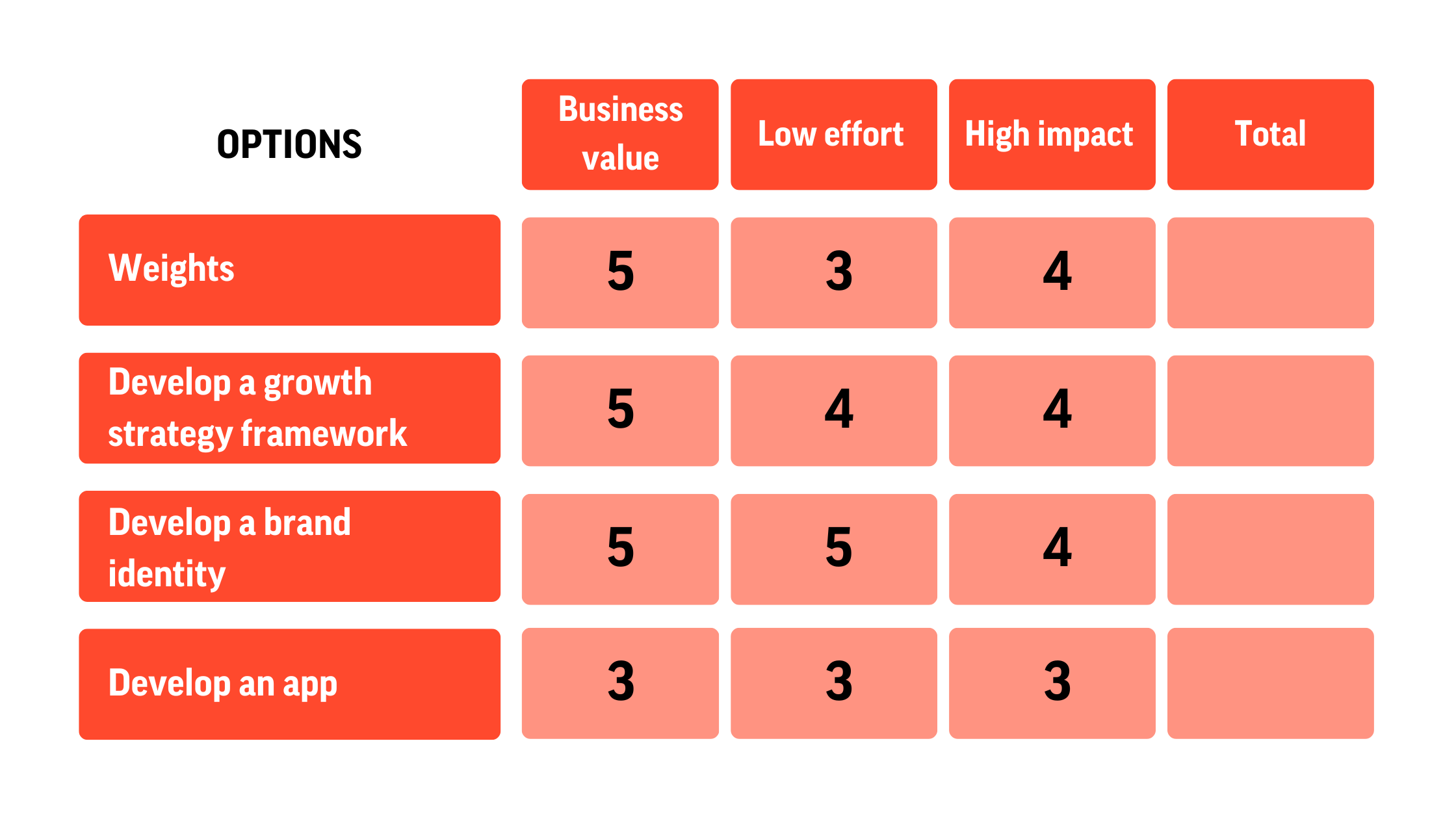
5. Calculate results:
To get the result, multiply the weight by the score of each option. Then add the numbers row by row.
If there is a tie, you can make another weighted decision matrix for those two options using additional factors. 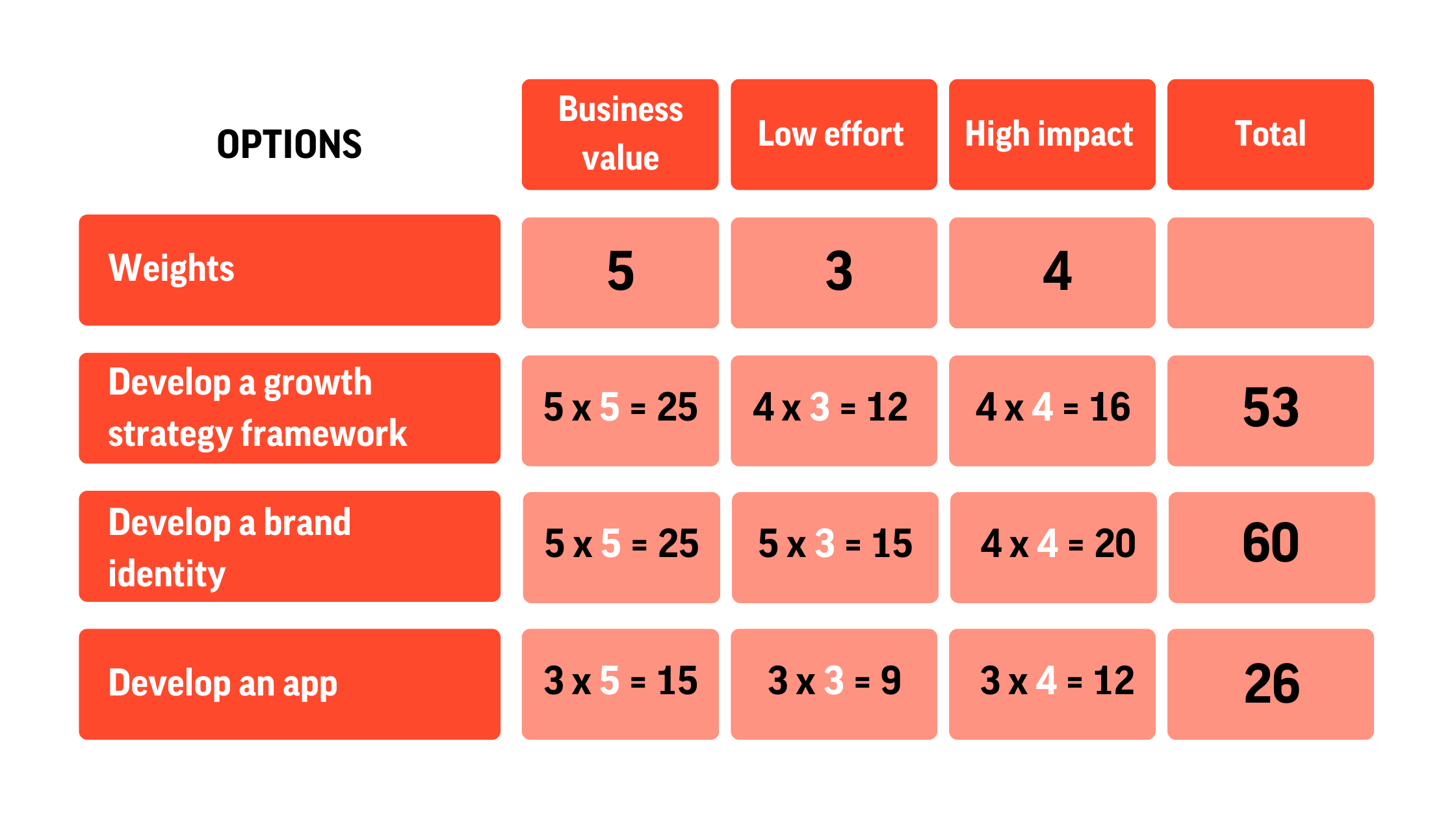
A weighted decision matrix not only means you rely less on guesswork
As mentioned above, the weighted decision matrix is a valuable tool because it’s easy to use and modify for every given situation. It also helps clarify your thinking so that just creating the matrix can bring new combinations to light.
For example, an awesome new app may have been on everyone’s mind, but in the weighted decision matrix, things become clearer: infrastructure has to come first. Give the growth strategy some traction to avoid chaos later on, then add the cool tech.
Get your priorities straight to your goals!
The weighted decision matrix helps you make strategic, calculated decisions free of emotion. It offers you peace of mind when considering many and varied options, and prepares you to present those options and justify your decisions to stakeholders. Persuasive skills are great if the goal is too—but the data tells all. And the tool is free! In doubt, schedule a meeting and we will help you!





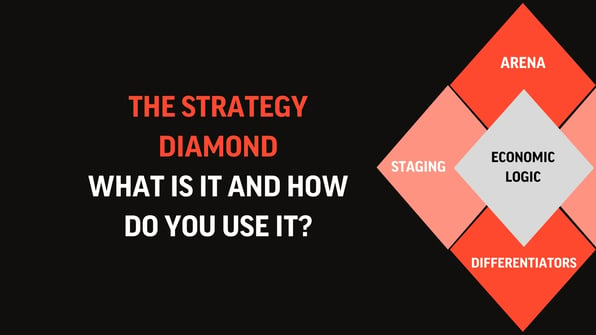
.png?width=596&name=DEI%20Strategy%20(1).png)



.png?width=80&name=USED%20(1).png)